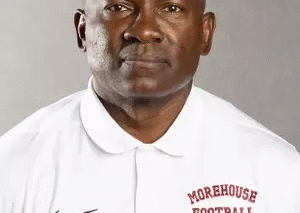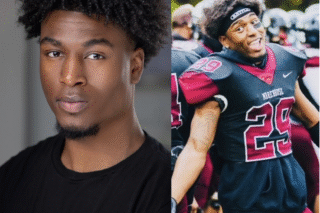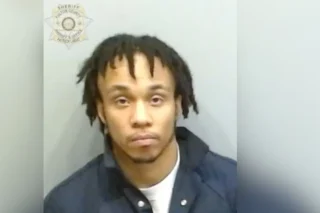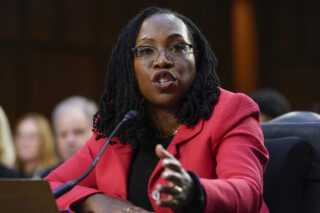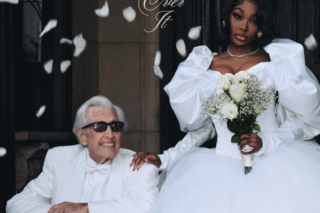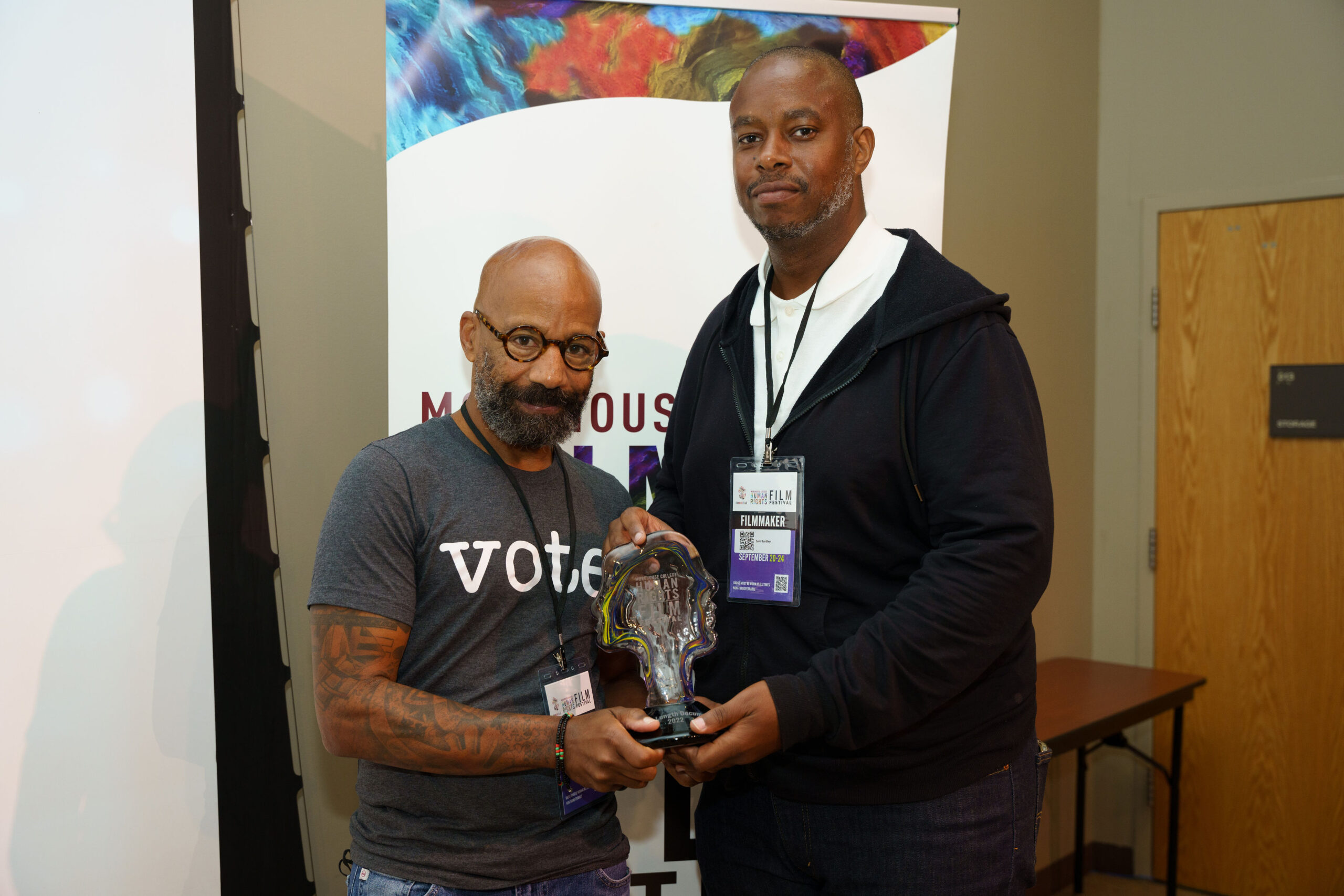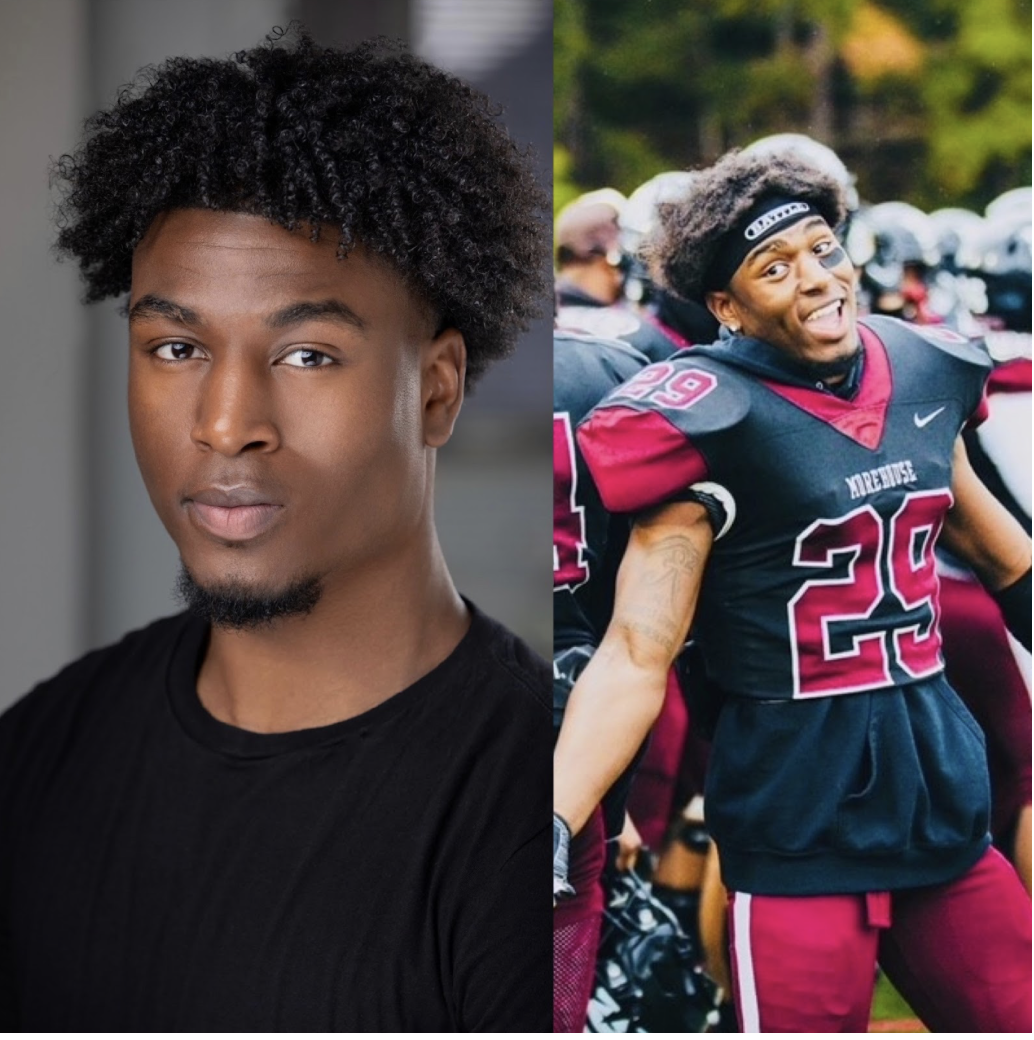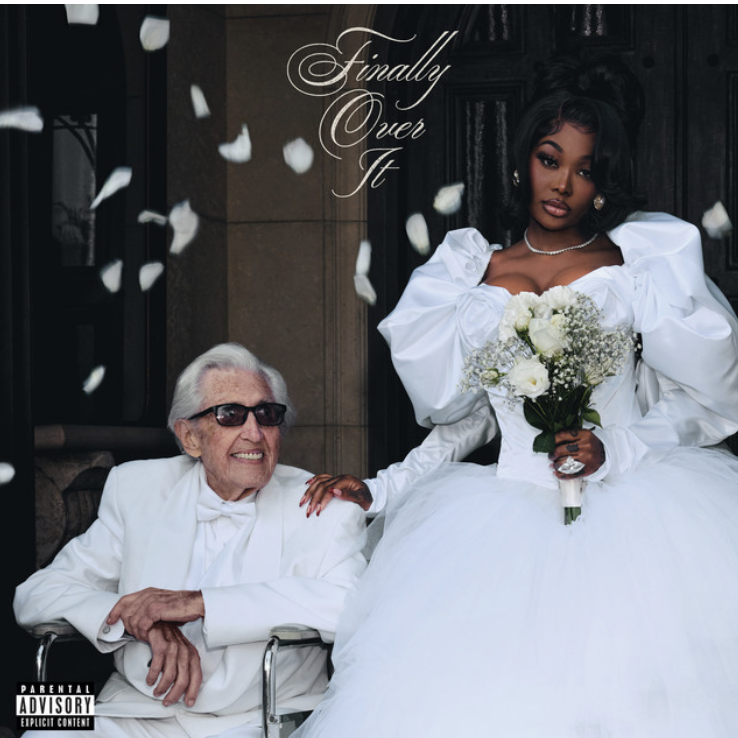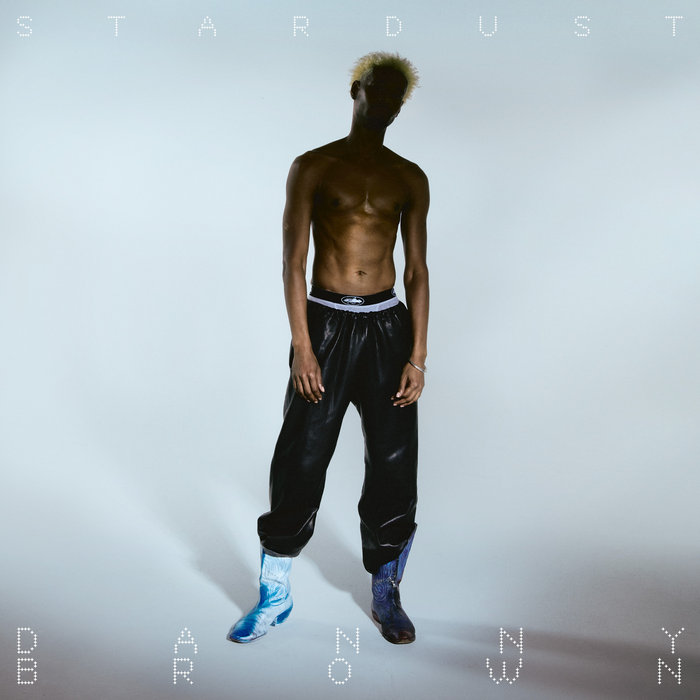Photo by Dope Shots Photography
Kevin Blackistone and Sam Bardley share their award from the Morehouse film festival.
By Kennedy Edgerton, Staff Writer
The feature-length documentary “Imagining the Indian” chronicles the Native American struggle against racist representation in the United States. The film explores the history of Native American racism, the psychological effect of negative representation on Native citizens, and the use of racist slurs and caricatures in sports culture.
That multilayered approach to the often-overlooked racism Native Americans are subjected to earned the Best Full Length Documentary award given at the Morehouse College Human Rights Film Festival on Sept. 23. It was shown that morning at Bank of America Auditorium.
The film tells its story through the unique perspectives of Native American subjects such as Navajo Nation member and social worker Amanda Blackhorse, professor and Quapaw member Dr. Derek Jennings, and policy advocate Suzan Shown Harjo.
Activist and filmmaker Aviva Kempner takes the director’s seat. Her filmography is often centered on social justice among marginalized groups. Black sports columnist Kevin Blackistone, a frequent panelist on ESPN’s “Around the Horn” and other programs, serves as a writer/producer of the film. Blackistone had previously written many articles about discrimination, representation and the need for diversity in sports.
As a Washington, D.C., native, Blackistone saw the reality of racist representation in American sports media that for 87 years used the nickname “Redskins” for Washington’s NFL team even though that name deeply offended Native Americans. This stubborn example of negative representation, which lasted from 1933-2020, motivated Blackistone to start this documentary project in 2014, alongside producer Sam Bardley. Blackistone also recognizes the intersection between racism against Native Americans and Black people.
“What happened to Natives has been the gateway for racism in this country,” Blackistone said. “Using those terms to describe Native Americans isn’t much different from other words used to describe African Americans. We felt a kinship with that struggle.”
The film begins by examining early forms of injustice against Native Americans, such as the Trail of Tears during the 1830s. According to Brittanica.com, military and tribal records indicate that about 100,000 Native Americans were forced to trek from the Southeast to territory west of the Mississippi, killing an estimated 15,000 Indigenous people along the way.
The false perception of Native Americans birthed from American history served as the basis for media misrepresentation. Films like Pocahontas (1995) and various westerns are prime examples.
The documentary also examines a few silver linings in Native American media representation. They include the 1990 film “Dances With Wolves” directed by Kevin Costner, and the 1998 film “Smoke Signals.” Like other marginalized groups, Native American citizens want to see accurate stories told from their perspective.
The negative representation of Native Americans has been most prevalent in American sports media. The film explores the racist history of team mascots intended to mimic Native Americans, including mascots for the Oklahoma University Sooners, the Kansas City Chiefs, and the renamed Washington Commanders.
Beneath the surface, these harmful mascots produce nothing but negative stereotypes and discriminatory behavior in American culture. The documentary explains that self-esteem, alcoholism and excessive drug use hamper the Native American community because of its negative depiction in media.
“Not only is it racist, it’s dangerous,” Blackistone said. “A lot of harm is inflicted on the Native youth who grow up with these images.”
Still, this documentary is a clear indication that some Natives are winning the fight. When asked about the future of Native representation, Blackistone remains optimistic.
“I think we are definitely making progress towards better representation,” he said. “Given the recent changes made in media, we are clearly moving in the right direction.”
The development of this film is a clear indication of a better future for Native American representation. However, the power of this film comes from the people who view it, and the impact they have on the world as a result.
Copy Edited by Yasir Muhammad and Miles Johnson


